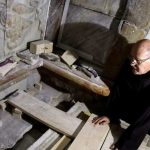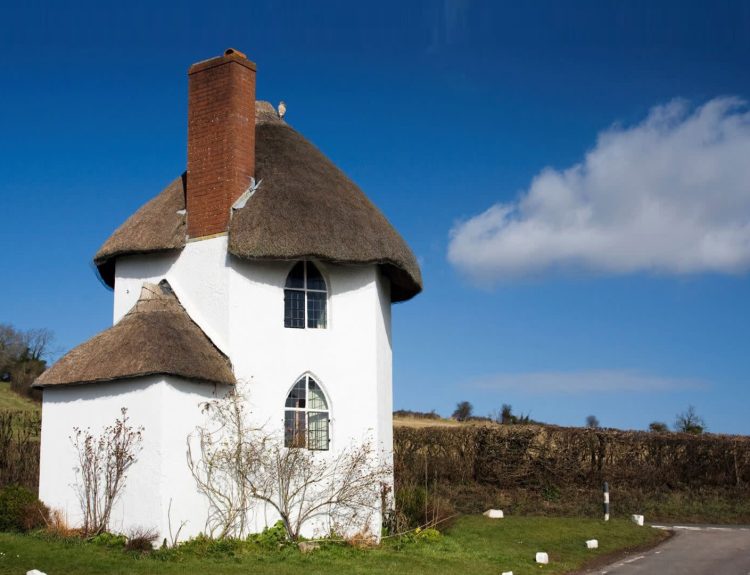Unless you majored in ancient history or studied the classics, you probably have a compartmentalized view of the great civilizations of the past. You may think, like many of us do, that the Greeks were the Greeks, and the Egyptians were the Egyptian, however the different people of the Mediterranean were in contact with each other, leading to a blurring of lines between cultures.
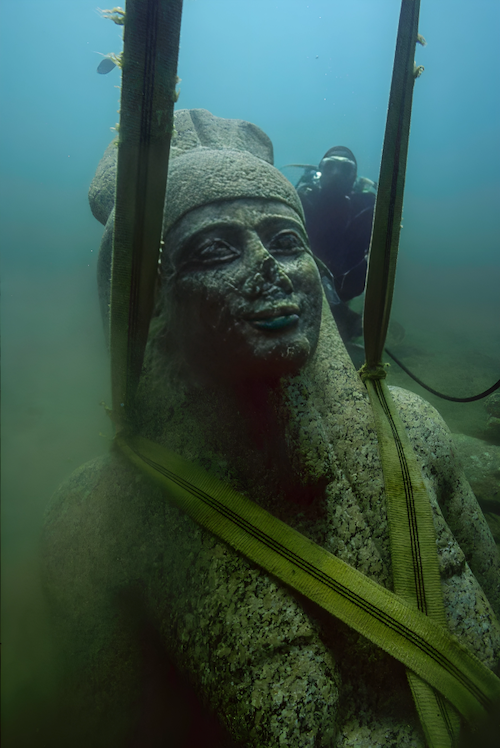
Nowhere is this more evident than the ruins of a mysterious, long-fabled, Atlantis-like city discovered sunken beneath the waters of the Mediterranean Sea. Once thought to be a mythical place, the ruins of the city of Thonis-Heracleion have finally been found. And what archaeologists have found repaints history.
Hercules, the Greek’s Favorite Hero
Hercules or, as the ancient Greek called him, Heracles, was a favorite character in ancient Greek lore. Renowned for his incredible strength and heroic deeds, Hercules was a demi-god. His father was Zeus, the kind of the gods, and a mortal woman named Alcmena. According to Greek mythology, Zeus’s wife, Hera, worked her magic to make Hercules go temporarily insane. In a fit of madness, he killed his own wife and children.
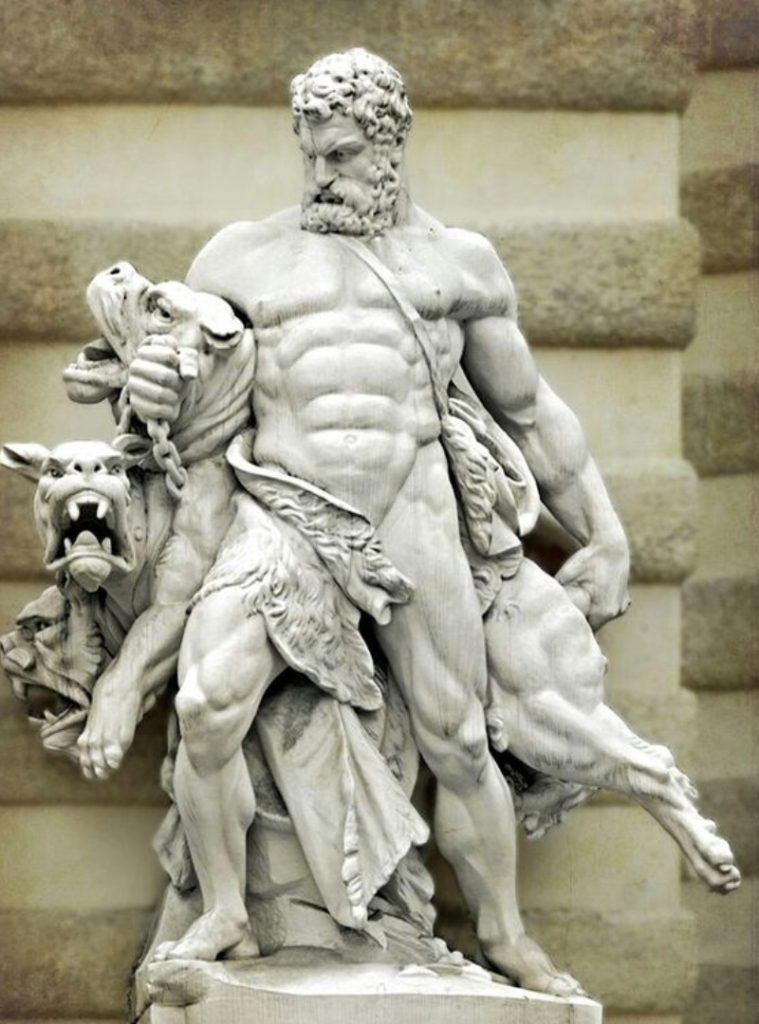
As punishment for his terrible deed, Hercules had to complete a series of twelve laborious deeds. After each one, Hercules showed his strength, heroism, intelligence, and bravery. For the Greeks, Hercules symbolized redemption, resilience, and valor … at the qualities of a good hero.
Thonis-Heracleion Was the Stuff of Legends
Since the city of Thonis-Heracleion was lost thousands of years ago (more on that later) and ruins of the city were not visible, modern historians debated whether the grand city ever even existed or if it was the stuff of legends.
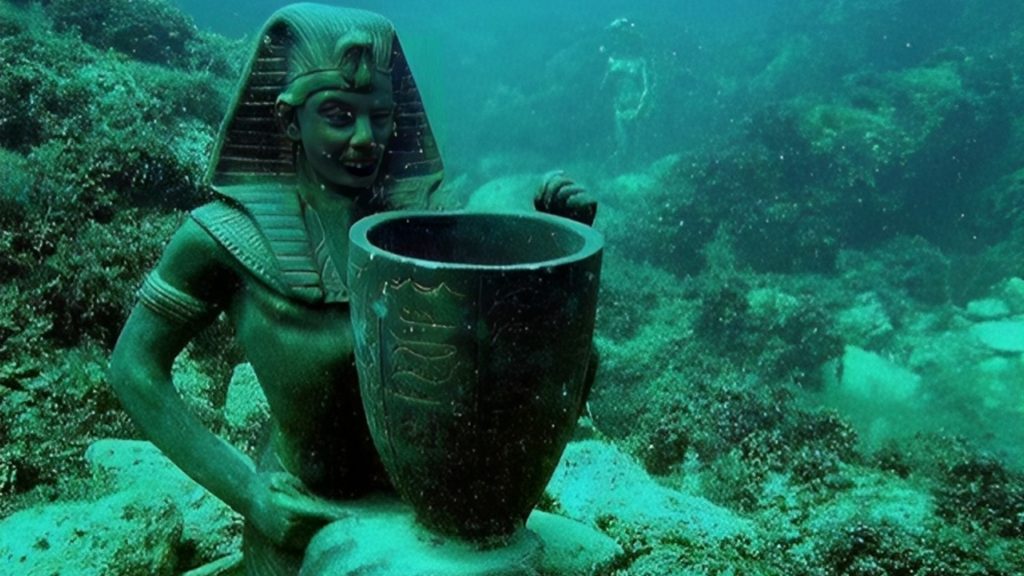
After all, the Greeks had fantastic stories about their hero, Heracles, aka Hercules, one of the city’s namesakes, who used his incredible demi-god strength to stop the flow of the Nile River and prevent the flooding of Thonis-Heracleion. But the city’s name also popped up in the works of ancient historians.
Ancient Historians Wrote about the City
Herodotus, Diodorus, and Strabo, three noted Greek historians of the past, all included references to the city of Thonis-Heracleion in their writings. In some ancient texts, the city was said to lie at the mouth of the Nile. Others say it was built on a thin strip of land in the Mediterranean Sea.
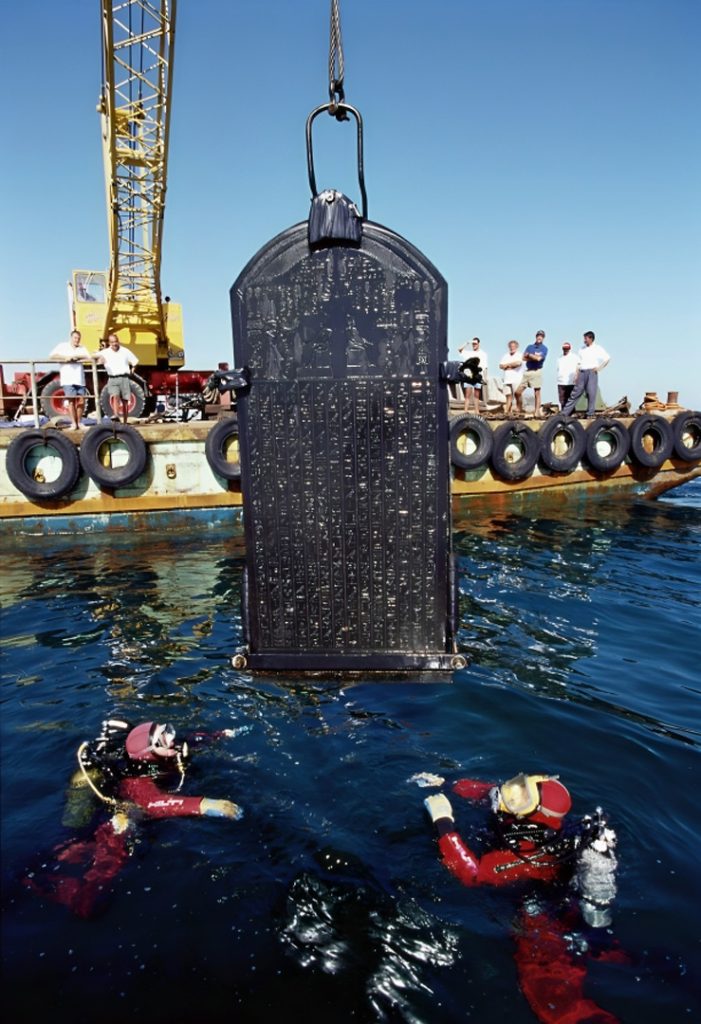
The Ancient Egyptians also mentioned the city of Thonis-Heracleion. In the Stele of Naukratis, there is a notation claiming that one-tenth of the taxes on goods coming through the port city of Thonis-Heracleion must be given to the ancient temple of Neith – the Egyptian goddess of rivers, water, and fate – which was located on an island in the Nile Delta.
Written in Stone
The Stele of Naukratis is an ancient Egyptian artifact dating back to the 4th century BCE. Discovered at the archaeological site of Naukratis in the Nile Delta, the stele is a stone slab inscribed with a decree issued by Pharaoh Nectanebo I. Naukratis was a significant Greek trading port and settlement in ancient Egypt, and the stele provides valuable insights into the interactions between the Greek and Egyptian communities during this period.
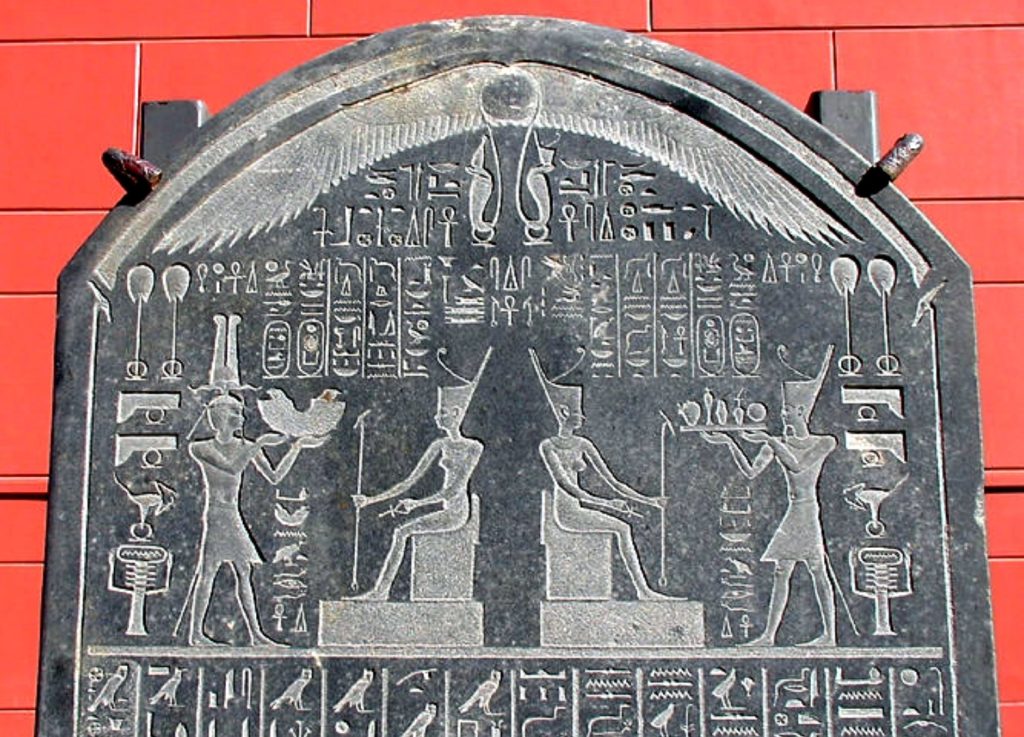
The decree on the stele outlines the privileges and exemptions granted to Greek mercenaries serving in the Egyptian army. It reflects the complex cultural and political dynamics between the Greeks and Egyptians. The Stele of Naukratis is important for historians and archaeologists studying the ancient Mediterranean world, shedding light on the cross-cultural exchanges and the coexistence of Greek and Egyptian influences in this thriving ancient port city.
A Real Place with a Real History
Historians and archaeologists now know that the city of Thonis-Heracleion did, indeed, exist. It was founded as simply Thonis, named after its king, possibly as early as the 12th century BC. The city, built on an island in the river delta, initially included only a temple and wharves so boats could dock in its harbors.
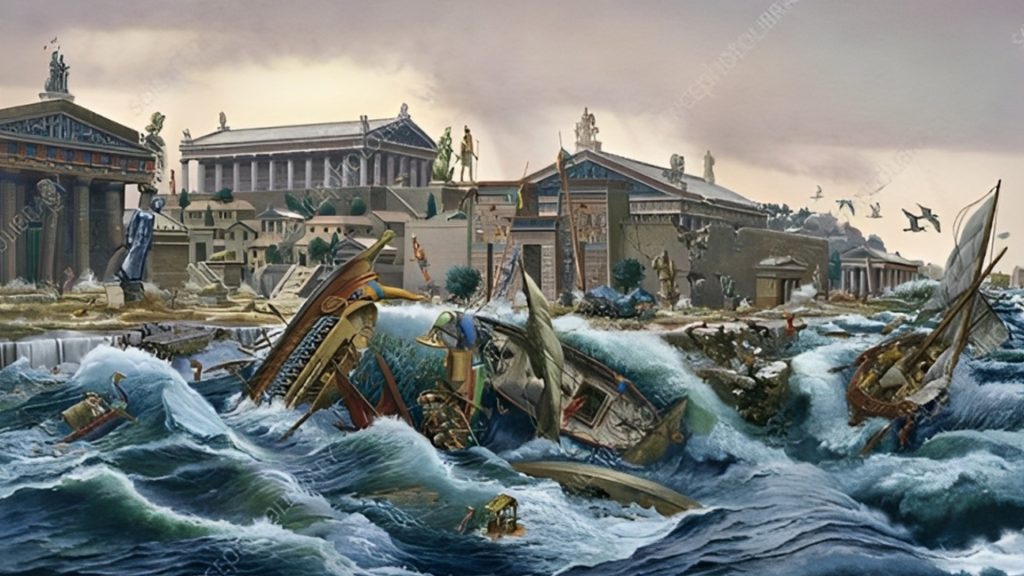
Over time, the city grew larger. More temples were constructed, as well as homes, bridges, canals, and floating anchorages. By 750 BCE, Thonis-Heracleion was Egypt’s largest port and the center for trade. Trade goods were unloaded at the harbors and docks of the city, then transported via small boats to the mainland. It was a prosperous and thriving port city, but it was also a doomed city.
The World’s Most Iconic River Delta
The Nile Delta, situated in the northern part of Egypt, is one of the world’s most iconic river deltas and a region of immense historical and cultural significance. Formed by the Nile River as it branches out and empties into the Mediterranean Sea, the delta is a vast, triangular alluvial plain characterized by its fertile soil and intricate network of distributaries.

The Nile Delta has been a cradle of civilization for millennia, providing the ancient Egyptians with abundant agricultural resources necessary for their sustenance and prosperity. The Nile River carries sand and soil along its 4,132 miles and deposits them in the delta, making the area ever changing.
Like Atlantis, Thonis-Heracleion Was Swallowed by the Sea
The ancient writings tell us that Thonis-Heracleion was destroyed and sank into the sea. Unlike the legendary Atlantis, which was said to have sunk in one day and one night, Thonis-Heracleion’s decline was gradual and less dramatic.
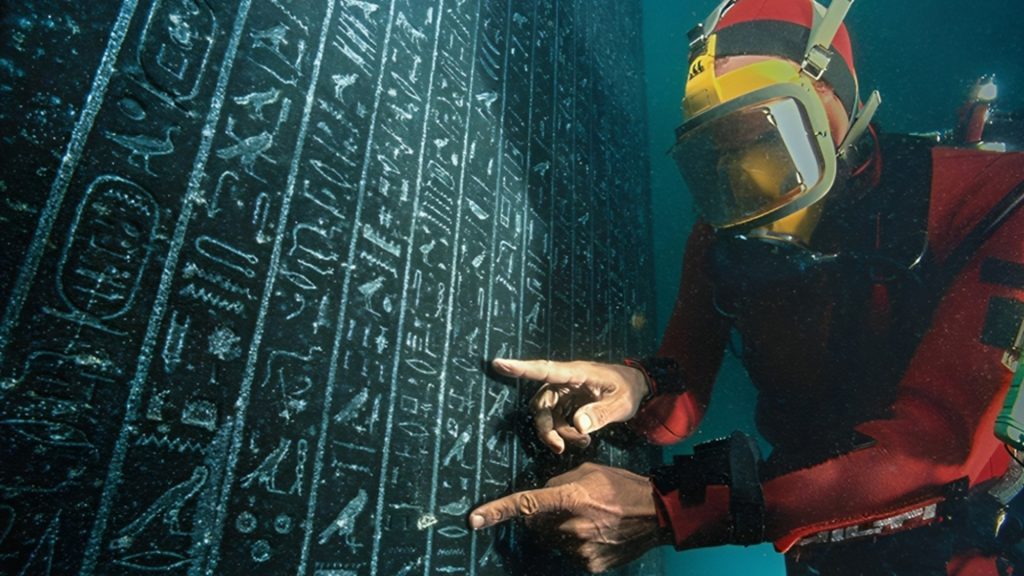
Modern researchers have been able to theorize about what befell Thonis-Heracleion. First, the city was built on low-lying, sandy, barrier islands. It was at the mercy of floods and tsunamis, as well as rising sea levels which caused widespread destruction. And then earthquakes hit. The quakes not only toppled buildings, but it created soil liquefaction. The remaining buildings and temples fell.
What Doomed the City Also Protected It
By around 101 BC, the islands on which Thonis-Heracleion was built crumbled. By the end of the 8th century AD, the city was completely gone. Very quickly, the submerged ruins were buried under a layer of sand and soil, erasing it from sight.
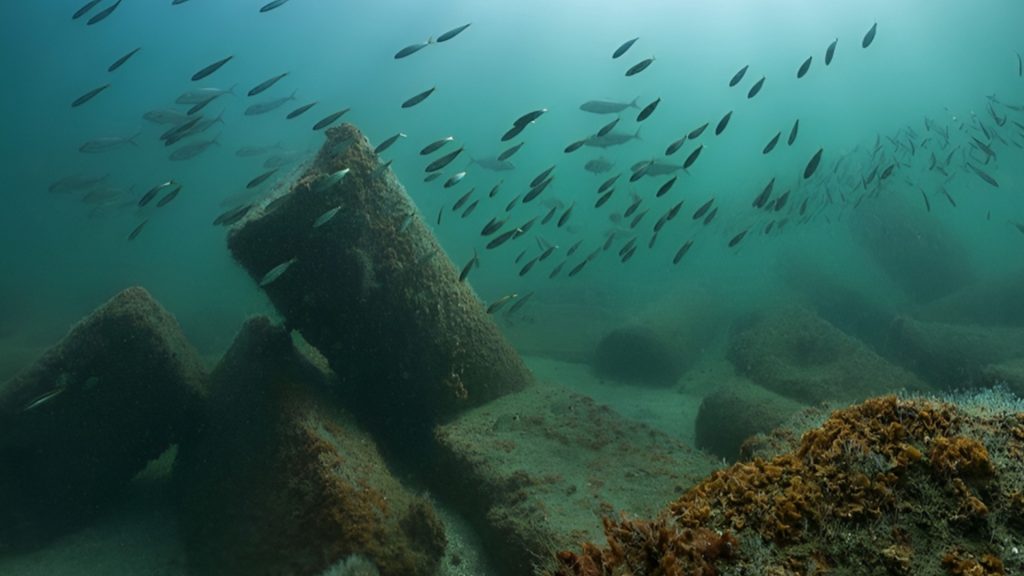
The movement of the soil that caused the demise of the city also protected it from looters and the ravages of time. Buried in the sand at the bottom of the Mediterranean Sea, it was almost impossible for thieves and looters to find it. But it was not impossible for a determined archaeologist to find.
Using Cutting-Edge Science to Rediscover the Sunken City
French underwater archaeologist Frank Goddio, working in collaboration with Egypt’s Ministry of Antiquities, spent years pouring over ancient texts and old maps looking for clues to help him narrow down his search for the lost city of Thonis-Heracleion. With a logical search radius set, Goddio turned to science to help him.
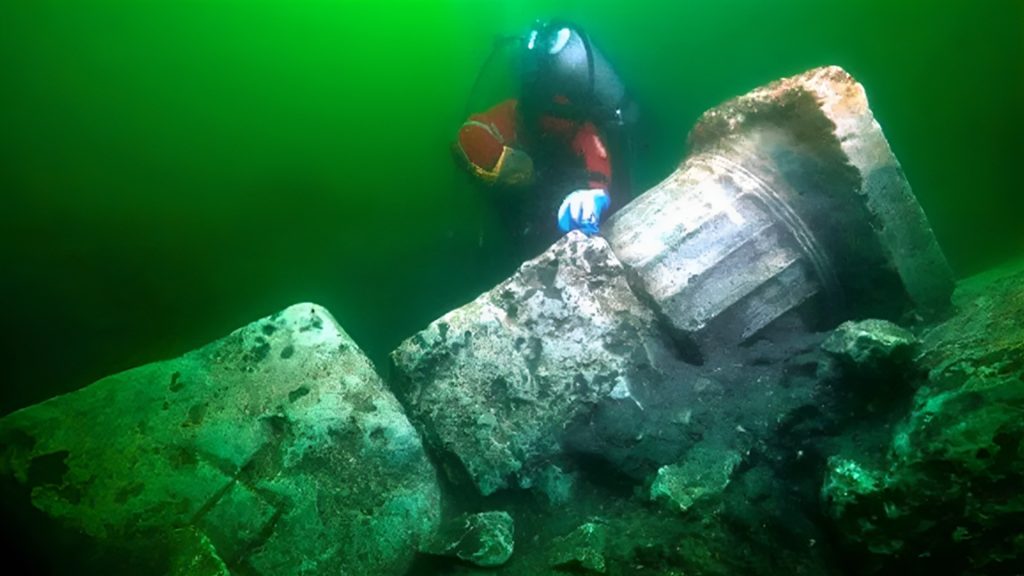
Using such cutting-edge technology as side scanning sonar, nuclear magnetic resonance magnetometer, and ground-penetrating radar, Goddio and his team were able to finally pinpoint the final resting place of the ancient city of Thonis-Heracleion. Then the real work began.
Excavating the Sunken City
Although the city was in ruins and buried under centuries of sediment, it was remarkably well preserved, Goddio and his team were able to use sonar to map the entire site and GPS to record the precise location of artifacts they found.
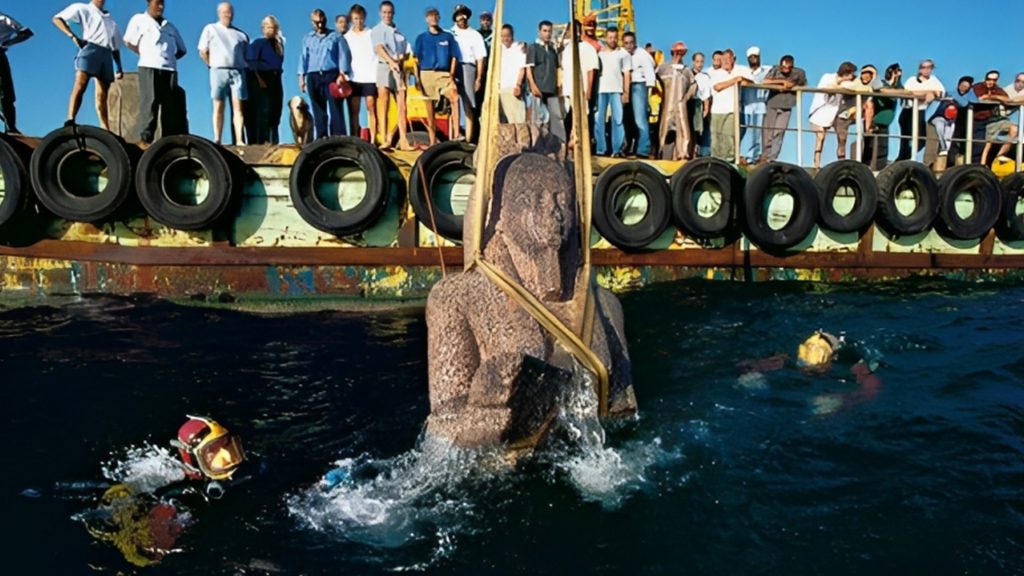
It has been a long and arduous process, however it’s worth the effort. What the archaeologists have found has been nothing short of astonishing. It changes the image of Thonis-Heracleion from that of a bustling port city to that of a thriving cultural center that modeled tolerance and acceptance.
An Ancient Egyptian Temple
Goddio and the other archaeologists have peeled back the layers of sand to reveal an important Egyptian temple. Built between the 6th and 4th centuries BC, the Temple of Amun-Gereb, located in the center of Thonis-Heracleion, was dedicated to the king of all Egyptian gods. Newly anointed pharaohs would have come to this temple for a special blessing to guide their reigns.

Excavations of this temple unearthed gold jewelry, semi-precious stones, alabaster perfume jars, and silver platters. Statues, carvings, and even scrolls of papyrus were found, all of which provide valuable data for researchers. It is not surprising to find a temple to an Egyptian god in an ancient Egyptian city, but what they found next was surprising.
An Ancient Greek Temple, Too
Not far from the location of the Temple of Amun-Gereb in the ruins of Thonis-Heracleion, Goddio and his team found another significant temple, but this one was unexpected. It was a Greek temple and sanctuary dedicated to Aphrodite, a Greek goddess of love and beauty.
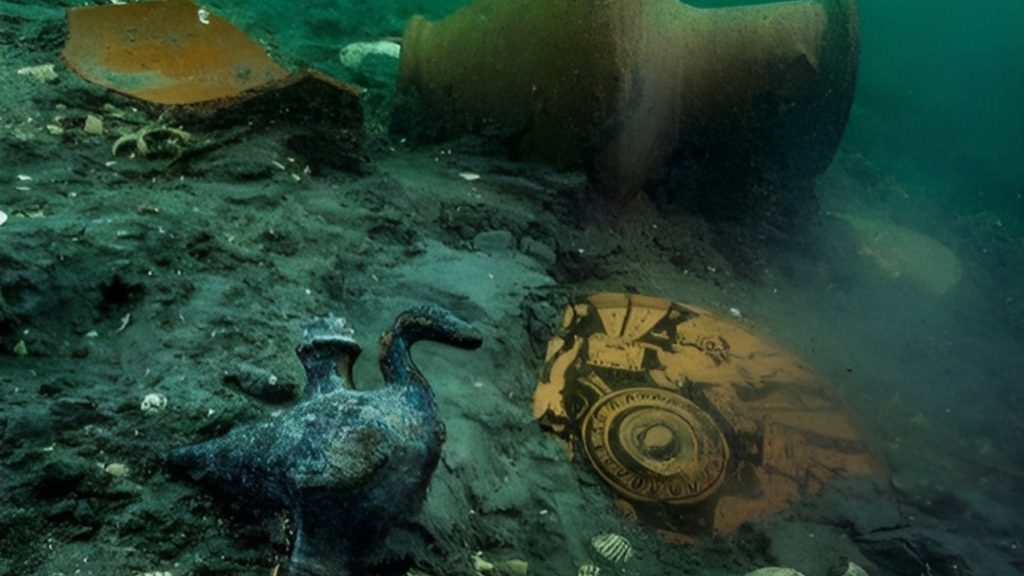
The Greek temple at Thonis-Heracleion would have been the site of religious celebrations and rituals. Greek traders and merchants doing business in the Egyptian port city would have presented offerings to Aphrodite at this temple. Indeed, the archaeologists discovered bronze and ceramic artifacts, even some Greek weapons, at the temple.
The Ptolemaic Galley
Archaeologists with the Institut Europeen d’archeologie Sous-Marine, or IEASM, found a flat-bottomed riverboat measuring 82-feet long. Called a Ptolemaic galley since it was constructed during the reign of Ptolemy, the boat was a rare find. The researchers were able to determine that the ancient war ship was most likely trapped when bricks or stones from the deteriorating buildings of Thonis-Heracleion.
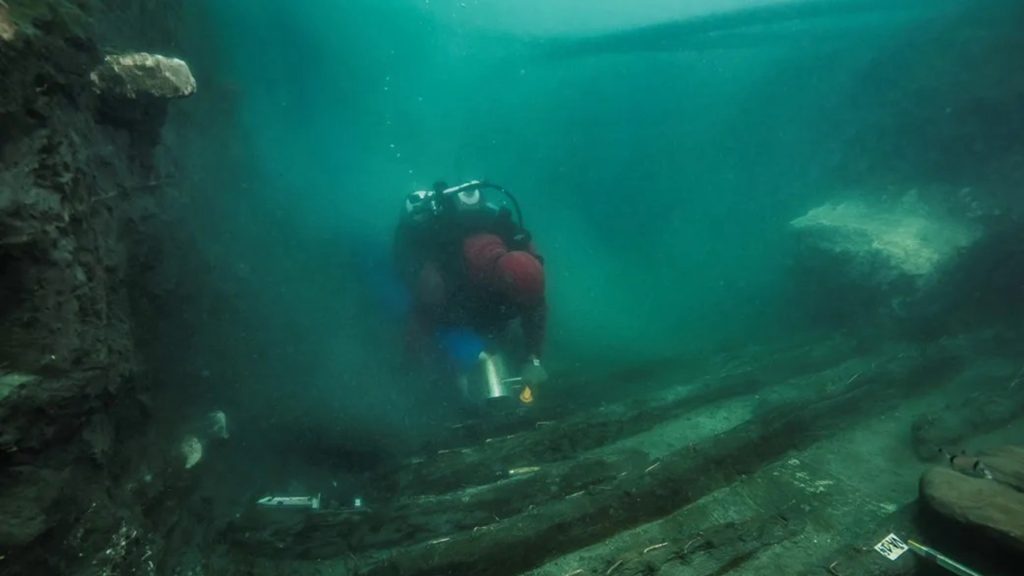
The ship was unusual in that it included a sail and oars like typical Greek war ships, but it also included elements common on Egyptian ships. Finding this buried sunken ship at the ruins of Thonis-Heracleion provided researchers with more evidence to show that merging of Greek and Egyptian cultures at the ancient city.
A Rich and Diverse City
The presence of a Greek temple in the heart of a major Egyptian port city … and not far from an important Egyptian temple … tells us that Thonis-Heracleion was a rich and diverse city. It is proof that the city welcomed Greek traders and permitted a Greek community to grow there.
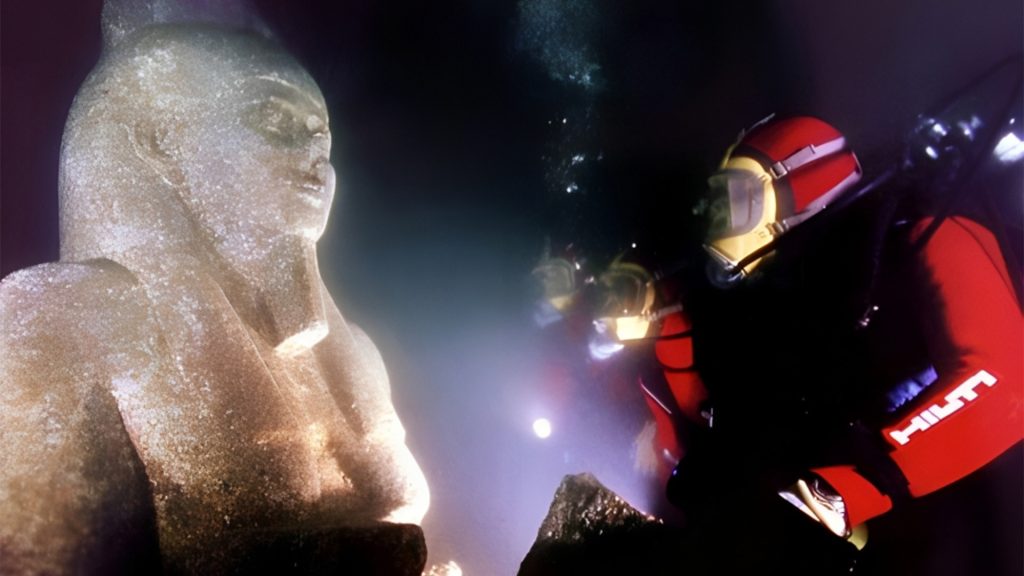
Goddio explained that the Greek weapons found in Thonis-Heracleion seem to indicate that Greek mercenaries helped to defend the city. The amazing discoveries of both temples tell us that Thonis-Heracleion was a remarkable city, not just because of its position as a key port or because of its tragic demise, but because it was a place where different cultures and religions could coexist.



